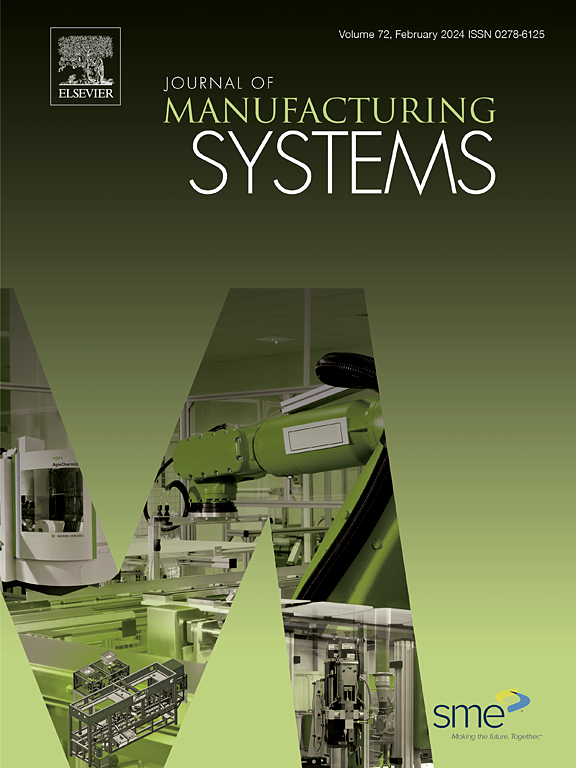Interpretable tool wear monitoring: Architecture with large-scale CNN and adaptive EMD
IF 12.2
1区 工程技术
Q1 ENGINEERING, INDUSTRIAL
引用次数: 0
Abstract
In manufacturing, tool wear monitoring (TWM) is crucial for ensuring product quality and processing efficiency. Numerous data-driven models based on deep learning have been developed to enhance the accuracy of TWM. However, most models necessitate traditional signal preprocessing and heavily depend on expert knowledge for parameter settings. To address these issues, this study proposes a novel TWM architecture, LCNN-EMD, which combines large-scale convolutional neural networks (LCNN) with adaptive empirical mode decomposition (EMD). By analyzing cutting process mechanisms, it is found that sensor signals can be decoupled into low-frequency noise from the machine's inherent frequencies, mid-frequency features from the tool's chatter, and high-frequency noise from the sensor's quantization. The interpretability of the LCNN-EMD architecture is rooted in its sophisticated capability to analyze and suppress specific frequency features from the input signals. The LCNN adeptly captures low- and mid-frequency features while effectively suppressing high-frequency noise. Concurrently, adaptive EMD dynamically mitigates low-frequency noise, ensuring the preservation of critical mid-frequency features. This dual mechanism not only enhances the accuracy and robustness of LCNN-EMD but also provides it with high interpretability, addressing the limitations of traditional models that depend on extensive expert knowledge and static signal preprocessing. Finally, we conduct tool life experiments and compare the LCNN-EMD with mainstream models for a comprehensive evaluation. Experimental results indicate that LCNN-EMD consistently outperforms the comparative models in terms of accuracy and stability.
求助全文
约1分钟内获得全文
求助全文
来源期刊

Journal of Manufacturing Systems
工程技术-工程:工业
CiteScore
23.30
自引率
13.20%
发文量
216
审稿时长
25 days
期刊介绍:
The Journal of Manufacturing Systems is dedicated to showcasing cutting-edge fundamental and applied research in manufacturing at the systems level. Encompassing products, equipment, people, information, control, and support functions, manufacturing systems play a pivotal role in the economical and competitive development, production, delivery, and total lifecycle of products, meeting market and societal needs.
With a commitment to publishing archival scholarly literature, the journal strives to advance the state of the art in manufacturing systems and foster innovation in crafting efficient, robust, and sustainable manufacturing systems. The focus extends from equipment-level considerations to the broader scope of the extended enterprise. The Journal welcomes research addressing challenges across various scales, including nano, micro, and macro-scale manufacturing, and spanning diverse sectors such as aerospace, automotive, energy, and medical device manufacturing.
 求助内容:
求助内容: 应助结果提醒方式:
应助结果提醒方式:


